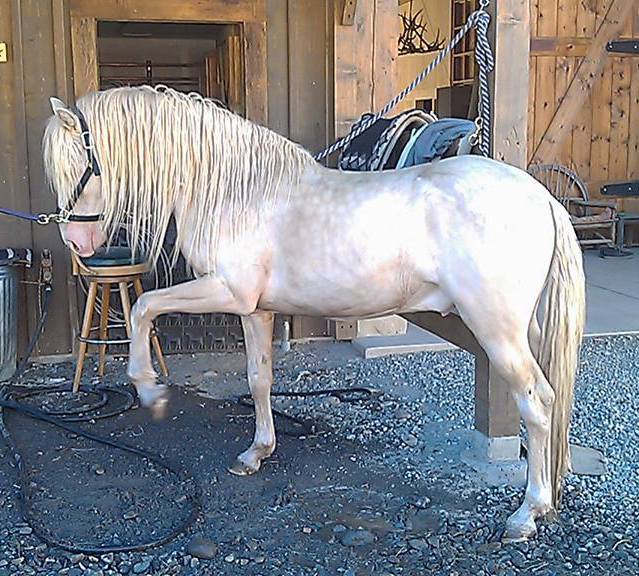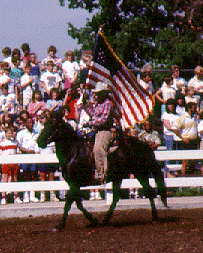Spanish Barb Horses
The Spanish-Barb traces its lineage through  the Andalusian and Spanish Jennet horses brought to North America by the Spanish explorers
during the 16th century. Both the Andalusian and the Jennet had evolved from the Barb
horse of North Africa, which was brought to the Iberian Peninsula after the Moorish
invasion of Spain in 711. In America, the Spanish-Barb was most prevalent in areas
of Spanish settlement, in the Southeast and the Southwest. In the Southeast, the Spanish-Barb
provided the foundation for both the Chickasaw and Choctaw Indian horses. Chickasaw
blood would play a major role in the development of the American Quarter Horse. In
the Southwest, they became the horse of the early Spanish and later Mexican cowboys,
and went on to form the basis for the wild Mustang herds of the West.
the Andalusian and Spanish Jennet horses brought to North America by the Spanish explorers
during the 16th century. Both the Andalusian and the Jennet had evolved from the Barb
horse of North Africa, which was brought to the Iberian Peninsula after the Moorish
invasion of Spain in 711. In America, the Spanish-Barb was most prevalent in areas
of Spanish settlement, in the Southeast and the Southwest. In the Southeast, the Spanish-Barb
provided the foundation for both the Chickasaw and Choctaw Indian horses. Chickasaw
blood would play a major role in the development of the American Quarter Horse. In
the Southwest, they became the horse of the early Spanish and later Mexican cowboys,
and went on to form the basis for the wild Mustang herds of the West.
Over the years, the Spanish-Barb came close to being absorbed into the general horse
population. The breed's survival today is due to the dedicated, but small scale breeding
carried on by a few individual families and ranchers. Unfortunately, few records were
kept and no attempt was made to register this rare and unique horse until the formation
of the Spanish-Barb Breeders Association in 1972.
The Spanish-Barb weighs between 800 and 975 pounds and stands between 13.3 and 14.1 hands. They are noted for their smooth gait, comfortable ride, and surefootedness, which makes them an excellent horse for trail and endurance riding and ranch work.
Additional information available from the Spanish-Barb Breeders Association, 188 Springridge Rd., Terry, MS 39170. Phone: (601) 372-8801
References
Kentucky Horse Park, 4089 Iron Works Pike, Lexington, KY 40511
